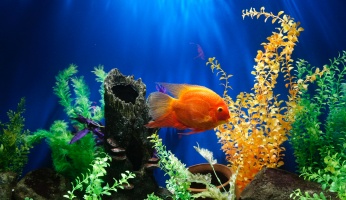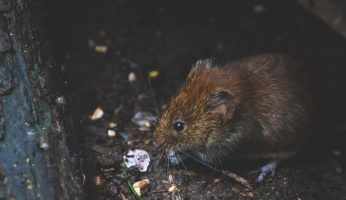Buying an Iguana Cage? What You Need to Know
 Buying an Iguana Cage? What You Need to Know
thegearhunt.com
Buying an Iguana Cage? What You Need to Know
thegearhunt.com
Before you go out and spend hundreds, possibly even thousands of dollars on an iguana cage, you need to have some knowledge about iguanas, their natural habitats and eating habits. Having this information will better allow you to replicate their natural habitat within an enclosure. This is an important goal, as the more they feel at “home”, the healthier and happier they’ll be. For example, an iguana needs a certain amount of UVB rays to be able to properly process and digest their foods. I’ll get to more on that topic later.
Where Does Your Iguana Come From?
There are numerous types of iguanas. They come from areas of the Caribbean Islands, Mexico, Brazil, and Central America. Each of these places provides different environments for iguanas. Therefore there are green iguanas, marine iguanas and desert iguanas that come from these various places. We’re going to be focusing on the green iguana since this is the one that’s predominantly sold in pet shops through importation. The green iguana, or also known as the American iguana, is commonly found in Mexico, however, in recent years it’s beginning to be spotted in the southernmost areas of Florida. This new domain wasn’t a natural occurrence, as they were introduced by humans. There are also variations of colors within the green iguana family ranging from erythristic (red colored) iguanas, albino iguanas and axanthic (blue colored) iguanas.
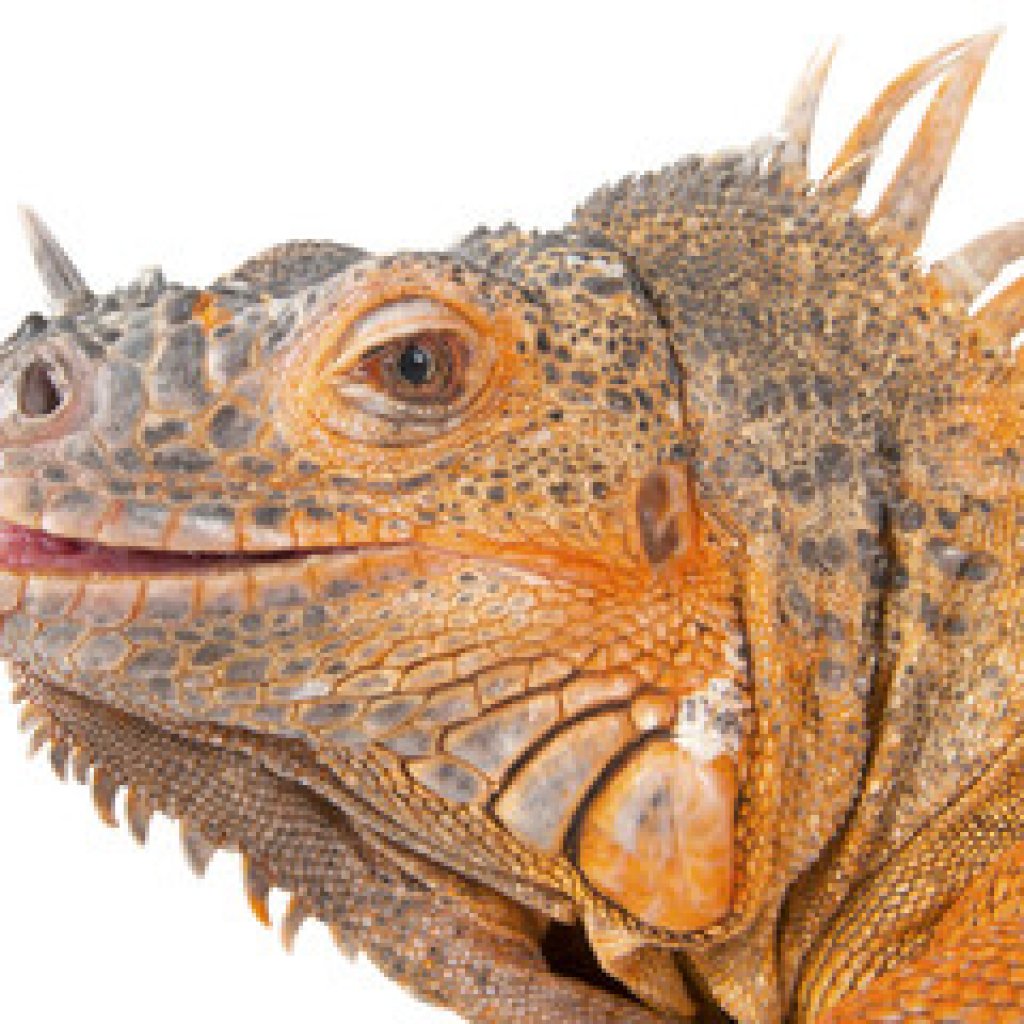
Thoughtful Consideration
Please carefully consider making an iguana part of your family before purchasing one. When properly cared for, owning an iguana can easily be a twenty-year commitment. They’re readily available at most pet shops and inexpensive, but they’re not disposable. Yes, they’re cute when you see them at the pet store. They ’re tiny, brightly colored little dinosaur looking reptiles that can easily sit in your hand. However, it will eventually grow to be five to seven feet long, weighing upward of 15lbs.to 18lbs. on average. The males typically get larger and more aggressive than females. He’ll use his very powerful tail to impress the females and fight for dominance in their social group. Both male and females will also use their tails as a means of defense when they’re feeling threatened for whatever reason.
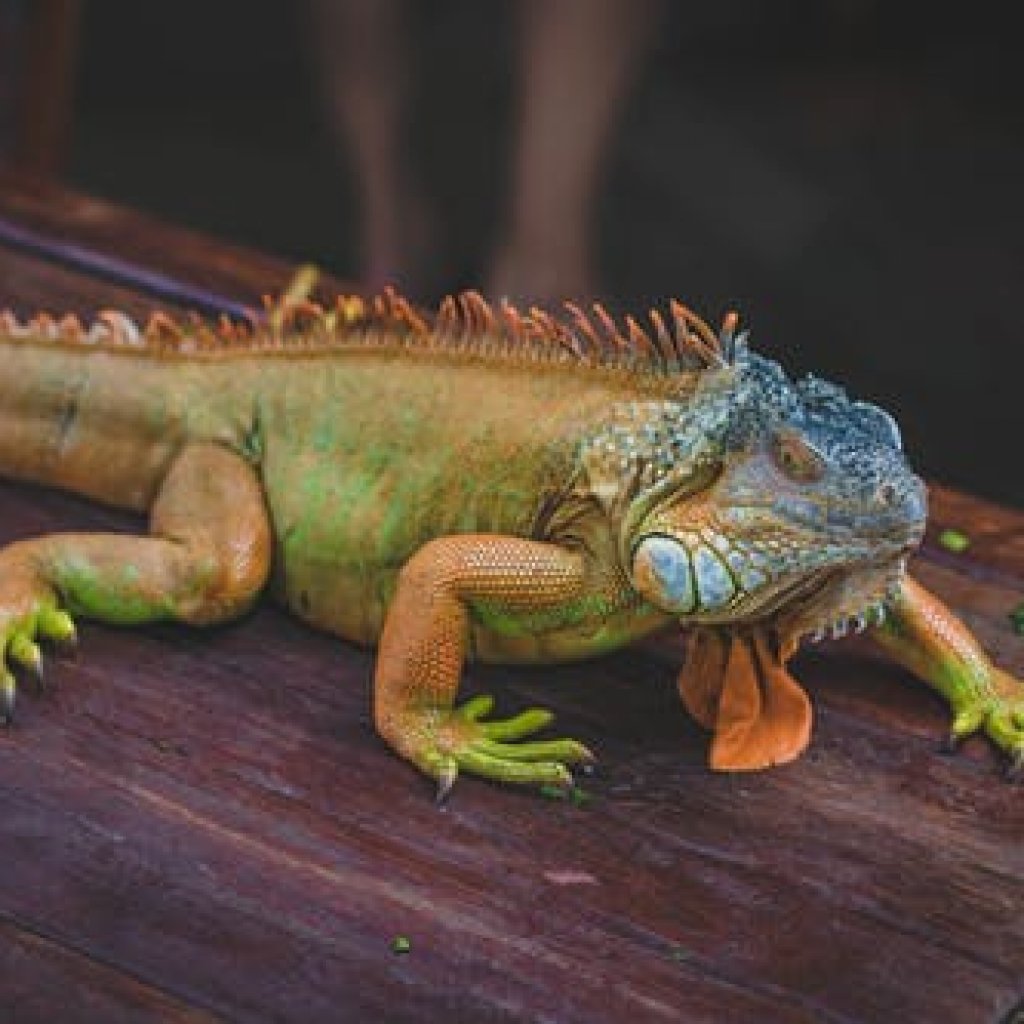
Iguana 101
In the beginning, it will be easy to house your baby iguana in a twenty-gallon tank, however as it grows it will need larger and larger enclosures. Eventually needing an enclosure that is 6ft. high by 10 to 12ft. In diameter.
Iguanas are arboreal. This means they live up in the canopy of trees. They usually will only come down to the ground during mating season, building their nests in the sandy ground. Interestingly, they are actually excellent swimmers when the need arises.
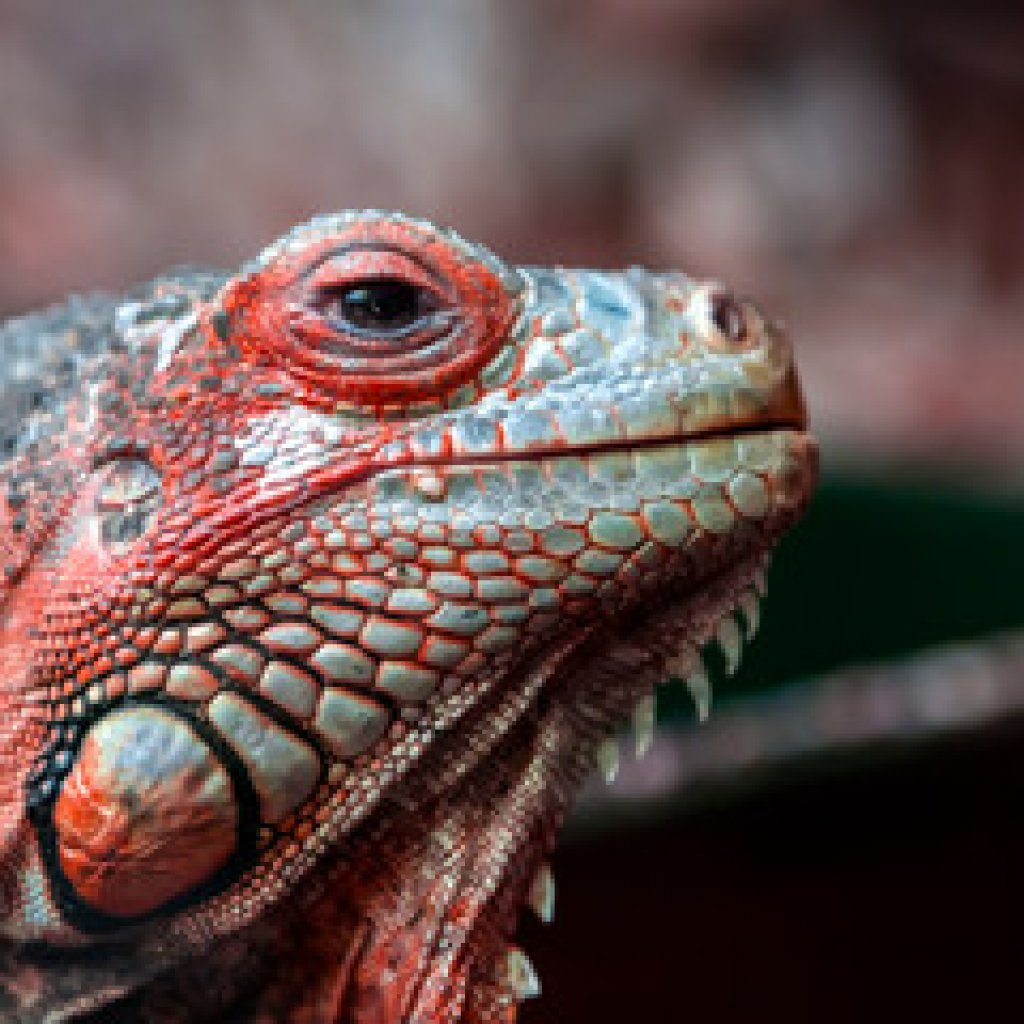
Iguanas are diurnal. This means they sleep at night and are awake during the daylight hours. They like to spend more time resting and basking in the morning sunlight, than eating or moving.
In fact, the green iguana has lovingly been called a Bamboo Chicken because of their inclination to hang out in the tops of the bamboo.
Iguanas are herbivores. Meaning they’re plant and vegetation eaters. The canopies of the trees provide a perfect environment for their dietary needs, with various leaves, flowers, and fruits.
Now that we have a little bit of general knowledge about iguanas, we can better understand their housing needs and how it ties in with diet, temperature, humidity and the need for proper UVB lighting.
Things to Consider When Setting Up Iguana Cage
As stated earlier a baby or young iguana can happily and healthily live in a twenty-gallon aquarium, up until they’re approximately 18 inches long. You DO NOT want to put a baby in an enclosure that’s too big, as they’ll more than likely have a hard time finding their food and water. Some can feel insecure and threatened, even to the point of believing that you’re a predator.
The bottom of the tank should be lined with artificial turf or even newspaper. Make sure that the substrate that you use isn’t something that your baby iguana can accidentally ingest when it’s eating because this could cause bowel blockage. You can then put some plastic, reptile plants in the aquarium along with possibly some natural jute and sticks for him to climb on. Some people choose to use live plants. If you do decide to go this route, please make sure that you’re using reptile safe, non-toxic plants. You need to be aware that there’s a good chance that your iguana will decide to snack on some of his foliage. I recommend an appropriately sized hibiscus plant. Make sure that you purchase your plants from a nursery that doesn’t use any chemical fertilizers or pesticides, as this could kill your iguana. I always flush the soil with water and hose the plants’ leaves and stems regardless of where I purchased it from. I’ll then let it sit in the sun for a couple of weeks minimum, just for extra good measure. Your imagination can have fun coming up with different tropical environments that allow your lizard a stress-free life. Be careful not to get to carried away with furnishing his home, he likes the freedom of movement.
I recommend a screen top, as many baby reptiles have been lost due to unexpected escapes. They tend to be able to climb better than you ever thought they could.
The next thing you’ll need is a source of heat. I don’t recommend using a heat rock for several reasons. First of all, remember that iguanas like to bask in the sun up in the treetops, therefore a basking light or heat light is going to be your best bet. By providing his heat source from above, you’re allowing his parietal eye to function properly and regulate his own body temperature. The parietal eye is a scale looking sensory organ that is on the top of the lizards head. This organ can distinguish darkness, light and enables the lizard to thermoregulate. This special organ also allows the iguana the ability to determine when there are predators that may be approaching from above.
I’ve seen more than one reptile burned due to a malfunctioning heat rock or under tank heating pad. There’s no way to regulate the temperatures on these rocks, nor do the iguanas recognize that they’re on anything hot, easily burning themselves since they sense it from the parietal eye.
You’ll want to have a reliable reptile thermometer so that you can gauge how far you need to suspend your light from the top. You’ll want the basking spot to be right at 120 degrees. You’ll also want to situate it so that your iguana has plenty of room to get out from under the heat. On the cooler end of your tank, you’ll want to maintain a temperature of about 85 degrees. Your iguana will move in and out of the heated area as his body needs the heat.
For now you can get by with one heat bulb, however, you’ll need approximately 6 heat lights in a row when your iguana is full size. It will take this many to cover the length of its entire body, so as to appropriately heat all of its body. You’ll also need UV lighting, both UVA and UVB to prevent MBD, (metabolic bone disease) from lack of vitamin D. These specialized bulbs can be purchased online or at any full range pet shop. Again, you’ll want more lights, the larger the enclosure. Lights are probably one of the most important things that you can pay attention to.
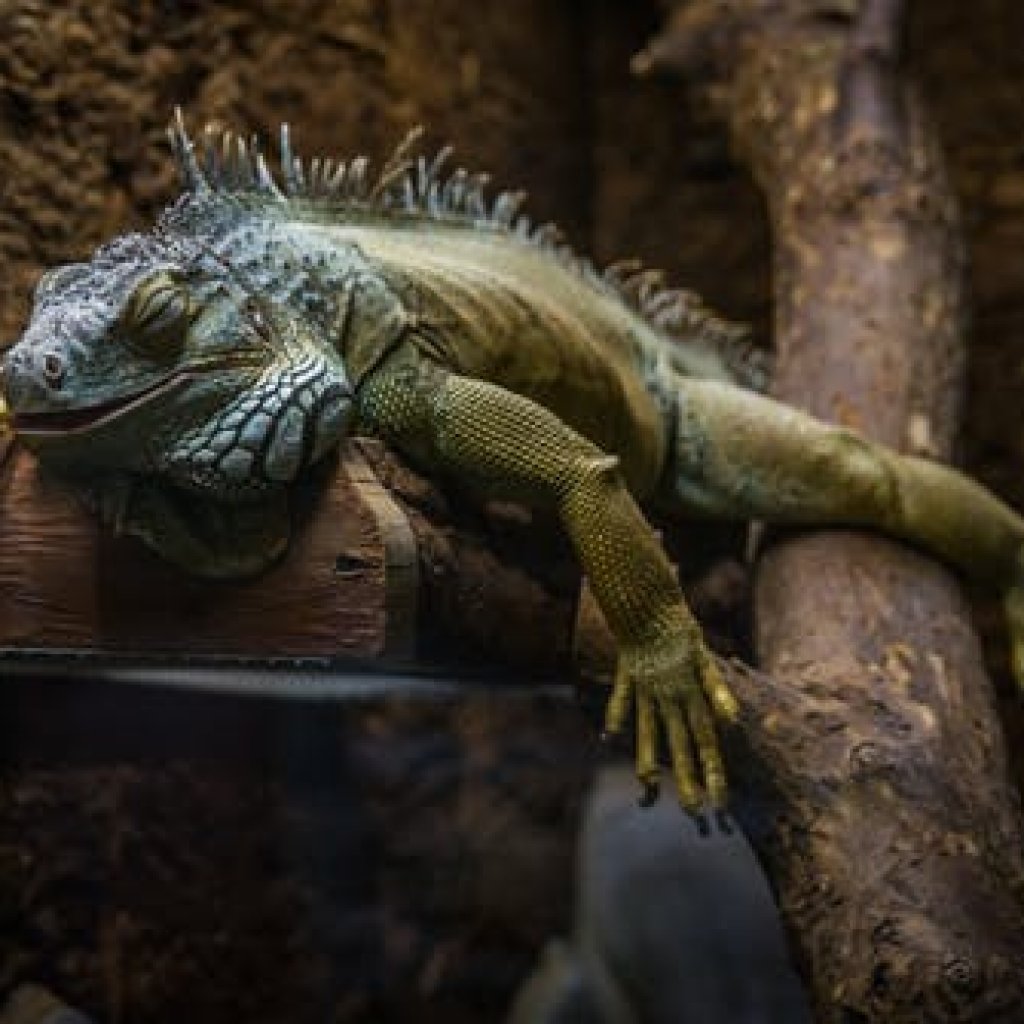
Water is important for iguanas just as it is for most living things. Your baby iguana will probably need help finding his water, so you might want to place him by his water dish several times a day. You’ll also want to mist him at least three times a day to help him with hydration. Make sure that his water dish is large enough for him to soak his body and tail in, but not so deep that he can’t lay comfortably in it without it covering his nostrils and mouth. Iguanas will typically live near a water source in the wild and are great swimmers, but this is a baby.
An iguana thrives on both natural, raw vegetables that you can buy at the grocery store along with prepared iguana food that you can purchase at your pet shop or online. Squashes, turnip or dandelion greens, snap beans, etc. are all excellent fresh foods for your iguana. Fruit is alright maybe once a week, however to much fruit can cause diarrhea.
Iguanas do not chew their food so it’s imperative that you cut the vegetables in proportion to the size of your iguana so that it doesn’t choke. The size that you cut the vegetable is the size that your iguana will have to swallow it….I can’t stress this enough.
Rep-Cal, Zoo Med and Mazuri are some of the companies that produce well-balanced foods that iguanas enjoy eating. Most people give their iguanas a combination of fresh veggies and commercial food. The commercial food should be moistened before feeding to juvenile iguanas. It’s also a good idea to sprinkle a calcium supplement over their food once or twice a week.
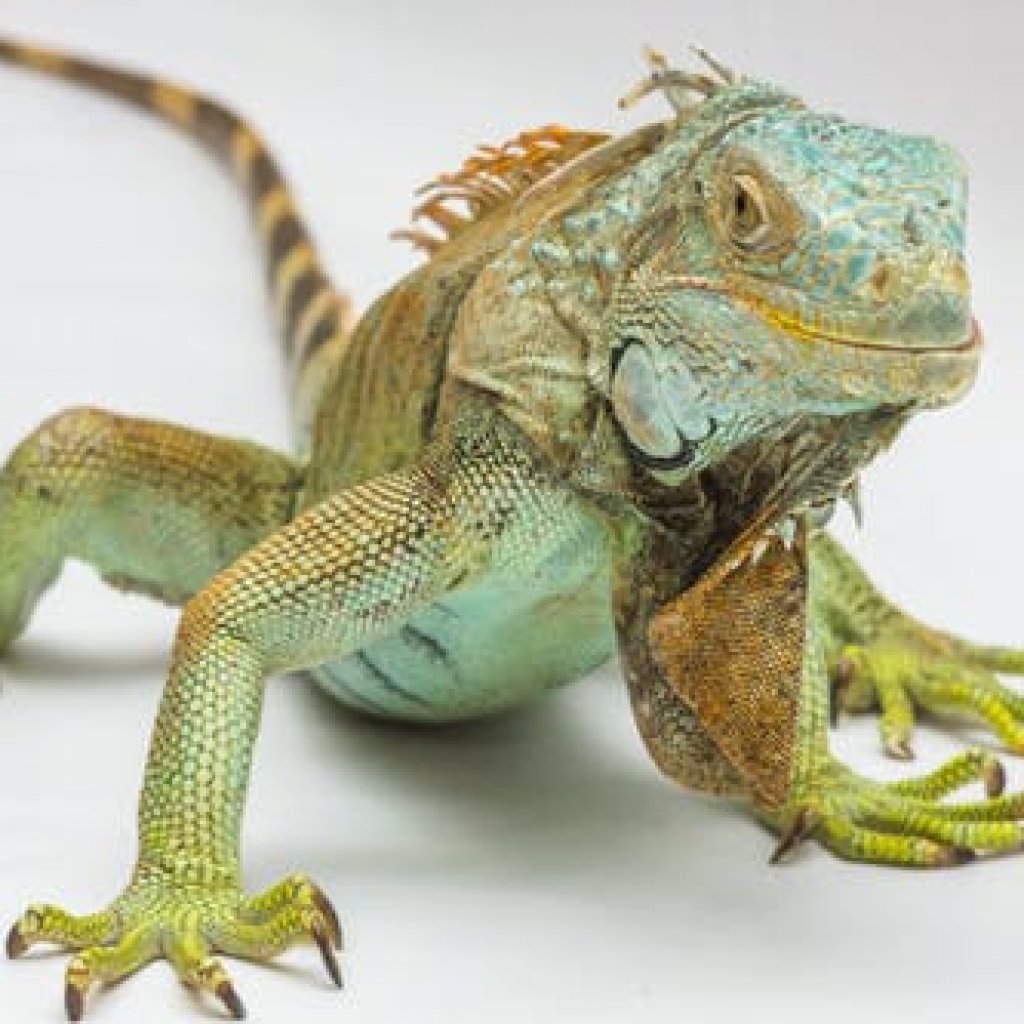
Indoors or Outdoors
Now that we’ve gone through “Iguana’s 101”, we can talk a bit about adult iguana enclosures. I call them “enclosures” because they’re not necessarily cages in the original sense of the word. Remember that you’re going to have to grow your enclosure as your iguana grows. Always balancing what’s to much space with what’s not enough space.
There are those people that go straight to a commercial cage manufacturer, often times spending upwards of $3,000 on something that is more in the line of a piece of furniture than a cage. This makes good sense if you want your pet iguana to be in your living room, have absolutely no craftsmanship skills or no creative thinking.
The first thing you need to decide is if your iguana is going to live indoors or outside (if you live in a year-round warm climate location). Regardless of your choice about indoors or outside, the enclosure needs to be a minimum of 6 feet high since iguanas like to live in the tops of trees. It will also need to be 10 to 12 feet wide, so as to give him ample moving room. Of course, if you house your iguana outdoors than you won’t have the consideration of UV lighting as it will have the benefit of the real thing. You’ll still need to have a secure enclosure that will keep him safe from predators, as well as drastic weather changes. You also need to take into consideration accessibility for yourself to be able to feed, water and clean. If you’ve decided to house outdoors than one direction to go might be a prefabricated dog run made from plastic coated wire. Again, it needs to have a secure top that is made from a sturdy plastic coated wire that can’t be chewed through by predators of any type. You’ll also want to make sure that the spacing is not wide enough for your iguana to squeeze through or allow anything else in. Likewise, you’ll also want a wire bottom that can’t be penetrated by something trying to dig in. Size appropriate furnishings that will hold his weight and allow him to climb should be included. I would also put a small kiddie pool for him to soak in. You’ll have to clean this daily, as you’ll find all sorts of debris in it from old food to fecal matter. I knew someone who actually put a waterfall in their iguanas’ enclosure, only to disassemble it two weeks later because of the work it took to keep it clean. Unfortunately, bacteria grows far too easily in dirty water and this is a detriment to your lizard.

If you decided or need to house your iguana indoors, there are some different factors to take a look at. You won’t need to worry about predators penetrating your iguanas home, but you will need to take into account the ability for the enclosure to be water resistant. You’ll also be looking at putting appropriate heat and UV lighting in it. Make sure that cords are never accessible to your iguana, just to be safe. Also, whether indoors or outside, I would advise to never use a solid top such as plexiglass. Materials like plexiglass can act as a greenhouse causing your heat temperatures to rise to undesirable levels. Remember that you need to have the ease to disinfect and clean indoors too. Some people have built an indoor, as well as an outdoor enclosure being able to utilize the best of both worlds,
Iguanas can make incredible pets with proper preparation, consideration, knowledge, and commitment to providing your lizard with the healthiest and happiest life possible.
Sources:
- PetPonder/ Iguanas
- Wiki How/ How to Build an Iguana Cage
- Reptile Knowledge/ Keeping Iguanas as Pets
- Reptiles Magazine/ Green Iguana Care Sheet






